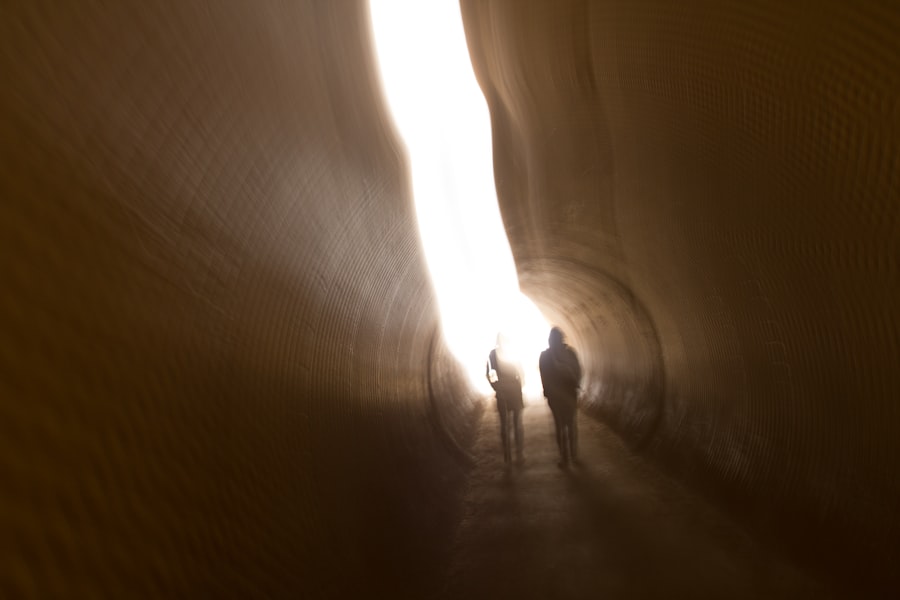The Drake Passage, a body of water situated between the southern tip of South America and Antarctica, serves as a vital maritime corridor connecting the Atlantic and Pacific Oceans. Named after the English explorer Sir Francis Drake, who navigated these waters in the late 16th century, the passage is renowned for its unique geographical and ecological significance. Stretching approximately 800 kilometers (500 miles) wide, it is often regarded as one of the most challenging sea routes in the world due to its unpredictable weather and turbulent waters.
The passage plays a crucial role in global ocean currents and climate regulation, making it an area of interest for scientists and explorers alike. This stretch of ocean is not merely a geographical feature; it is a gateway to one of the most remote and pristine regions on Earth. The Drake Passage is often the first encounter for those embarking on expeditions to Antarctica, setting the stage for adventures that promise both beauty and peril.
As vessels traverse these waters, they are met with breathtaking views of icebergs and the vast expanse of the Southern Ocean, all while navigating the complexities of one of nature’s most formidable environments. The passage embodies a blend of natural wonder and historical intrigue, drawing adventurers and researchers from around the globe.
Key Takeaways
- The Drake Passage is a body of water between South America’s Cape Horn and the South Shetland Islands of Antarctica, known for its rough seas and challenging conditions.
- The Drake Passage is crucial for Antarctic exploration as it provides the only direct connection between the Pacific and Atlantic Oceans, allowing for scientific research and wildlife observation.
- The Drake Passage is notorious for its unpredictable and treacherous nature, with strong winds, large waves, and extreme weather conditions making it one of the most dangerous sea crossings in the world.
- The Drake Passage is home to a diverse range of wildlife, including whales, seals, and seabirds, making it a popular destination for wildlife enthusiasts and researchers.
- The Drake Passage has a rich historical significance, with explorers and scientists using it as a gateway to Antarctica for centuries, contributing to the understanding of the continent’s unique environment and ecosystem.
The importance of the Drake Passage for Antarctic exploration
The Drake Passage holds immense significance for Antarctic exploration, serving as a critical route for researchers, scientists, and tourists eager to study the unique ecosystems and geological features of the continent. Its strategic location allows for relatively direct access to Antarctica, facilitating numerous scientific missions aimed at understanding climate change, glaciology, and marine biology. The passage acts as a conduit for vital ocean currents that influence global weather patterns, making it an essential area for climate research.
Moreover, the Drake Passage has become synonymous with adventure tourism, attracting thrill-seekers who wish to experience the raw beauty of Antarctica. Many expedition cruises utilize this route to transport passengers to the icy landscapes of the Antarctic Peninsula, where they can witness stunning wildlife and dramatic scenery. The importance of the Drake Passage extends beyond mere transportation; it serves as a platform for education and awareness about the fragile ecosystems that exist in this remote part of the world.
As explorers venture through these waters, they contribute to a growing body of knowledge that underscores the need for conservation efforts in Antarctica.
The treacherous nature of the Drake Passage

Navigating the Drake Passage is not for the faint-hearted; it is often characterized by rough seas and unpredictable weather conditions that can turn a calm voyage into a tumultuous experience in a matter of hours. The confluence of powerful ocean currents, particularly the Antarctic Circumpolar Current, creates a unique environment where waves can reach staggering heights. Sailors and passengers alike have come to respect the passage’s reputation for being one of the most challenging stretches of water on Earth.
The treacherous nature of the Drake Passage has led to countless tales of adventure and misadventure. Many vessels have encountered fierce storms that can whip up waves over 30 feet high, causing even experienced mariners to struggle with navigation. This unpredictability requires careful planning and respect for the elements, as well as an understanding of maritime safety protocols.
For those who dare to traverse these waters, it is essential to be prepared for anything—from sudden squalls to serene moments when the sea calms and reveals its hidden beauty.
Wildlife in the Drake Passage
| Species | Population | Threat Level |
|---|---|---|
| Antarctic Fur Seal | Unknown | Least Concern |
| Wandering Albatross | Approximately 25,000 breeding pairs | Vulnerable |
| Blue Whale | Unknown | Endangered |
| Antarctic Petrel | Unknown | Least Concern |
The Drake Passage is not only a challenging maritime route but also a rich habitat teeming with diverse marine life. The nutrient-rich waters support an array of species, making it an important feeding ground for various seabirds, seals, and whales. Among its most notable inhabitants are the majestic albatrosses, which glide effortlessly over the waves, their wingspans reaching up to 12 feet.
These birds are often seen soaring above vessels as they make their way through the passage, providing a glimpse into the vibrant ecosystem that thrives in these waters. In addition to seabirds, the passage is home to several species of whales, including humpback whales, orcas, and minke whales. These magnificent creatures migrate through the Drake Passage in search of food during their feeding seasons.
The sighting of a whale breaching or spouting water is a thrilling experience for travelers and researchers alike. Furthermore, seals such as leopard seals and Weddell seals can often be spotted resting on ice floes or swimming gracefully through the frigid waters. The biodiversity found in the Drake Passage highlights its ecological importance and underscores the need for ongoing research and conservation efforts.
Historical significance of the Drake Passage
The historical significance of the Drake Passage cannot be overstated; it has been a pivotal route for explorers since the Age of Discovery. Sir Francis Drake himself was one of the first Europeans to navigate these waters in 1578 during his circumnavigation of the globe. His journey opened up new possibilities for maritime exploration and trade, paving the way for future expeditions to Antarctica.
Over the centuries, many explorers have followed in his footsteps, each contributing to our understanding of this remote region. The passage has also played a crucial role in scientific exploration. In the early 20th century, expeditions led by figures such as Ernest Shackleton and Robert Falcon Scott sought to uncover the mysteries of Antarctica, often using the Drake Passage as their route to reach their destinations.
These journeys were fraught with danger and hardship but ultimately expanded human knowledge about polar regions and their significance in global climate systems. Today, historians continue to study these expeditions to gain insights into human resilience and adaptability in extreme environments.
Modern day expeditions through the Drake Passage

In contemporary times, expeditions through the Drake Passage have evolved significantly with advancements in technology and navigation. Modern vessels equipped with state-of-the-art safety features and communication systems allow researchers and tourists alike to traverse these challenging waters with greater confidence.
These modern-day expeditions often include educational components that emphasize environmental stewardship and conservation efforts. Passengers are encouraged to engage with scientists conducting research on climate change, marine biology, and glaciology during their journeys. This interactive approach not only enriches the travel experience but also fosters a deeper understanding of the challenges facing Antarctica today.
As explorers navigate through the Drake Passage, they become part of a larger narrative that seeks to protect this fragile ecosystem for future generations.
Climate and weather patterns in the Drake Passage
The climate within the Drake Passage is characterized by its extreme variability, influenced by its geographical location at the convergence of several oceanic currents. The region experiences strong winds and rapidly changing weather conditions that can shift from calm to stormy within hours. This unpredictability poses challenges for navigation but also contributes to its unique ecological dynamics.
The cold waters are rich in nutrients, supporting diverse marine life that thrives in this harsh environment. Seasonal variations also play a significant role in shaping weather patterns in the Drake Passage. During summer months (November to March), temperatures can rise slightly, making conditions more favorable for exploration.
However, even during this period, storms can arise unexpectedly, reminding travelers of nature’s power. Winter months bring frigid temperatures and increased ice coverage, further complicating navigation but also creating stunning landscapes that attract photographers and adventurers alike. Understanding these climate patterns is essential for anyone planning to traverse this remarkable passage.
Research opportunities in the Drake Passage
The Drake Passage presents numerous research opportunities for scientists across various disciplines due to its unique ecological characteristics and its role in global climate systems. Marine biologists study the diverse array of species that inhabit these waters, seeking insights into their behaviors and interactions within this complex ecosystem.
Additionally, glaciologists are drawn to this region to study ice formations and their responses to rising temperatures. The data collected from research conducted in the Drake Passage contributes significantly to our understanding of climate dynamics and helps inform conservation strategies aimed at protecting vulnerable ecosystems in Antarctica. Collaborative efforts among international research teams further enhance these opportunities, fostering a spirit of cooperation that transcends national boundaries in pursuit of shared knowledge about our planet’s changing climate.
Conservation efforts in the Drake Passage
As awareness grows regarding environmental issues facing our planet, conservation efforts in the Drake Passage have become increasingly important. Various organizations work tirelessly to protect this fragile ecosystem from threats such as overfishing, pollution, and climate change. Initiatives aimed at establishing marine protected areas (MPAs) within the passage seek to safeguard critical habitats while promoting sustainable practices among fishing industries operating in nearby waters.
Public awareness campaigns also play a vital role in conservation efforts by educating travelers about responsible tourism practices when visiting Antarctica via the Drake Passage. By encouraging visitors to minimize their environmental impact—such as adhering to strict guidelines regarding waste disposal and wildlife interactions—these initiatives aim to preserve the natural beauty of this region for future generations. Collaborative partnerships between governments, NGOs, scientists, and local communities are essential in ensuring that conservation measures are effective and sustainable over time.
The future of the Drake Passage as a gateway to Antarctica
Looking ahead, the future of the Drake Passage as a gateway to Antarctica remains both promising and challenging. As interest in polar exploration continues to grow among tourists and researchers alike, there is an increasing need for sustainable practices that balance human activity with environmental preservation. The passage will likely see advancements in technology that enhance safety measures while minimizing ecological footprints during expeditions.
Moreover, ongoing research into climate change will further illuminate how shifts in oceanic conditions may impact both marine life within the passage and broader global systems. As scientists continue their work in this region, they will play a crucial role in informing policy decisions aimed at protecting Antarctica’s delicate ecosystems from potential threats posed by increased human activity. The future trajectory of exploration through the Drake Passage will depend on collective efforts toward sustainability and conservation.
Tips for traveling through the Drake Passage
For those planning to travel through the Drake Passage, preparation is key to ensuring a safe and enjoyable experience. First and foremost, travelers should choose reputable expedition companies known for their commitment to safety standards and environmental stewardship. Researching itineraries that include educational components can enhance understanding of this unique region while fostering appreciation for its ecological significance.
Packing appropriately is also essential; layers are recommended due to fluctuating temperatures and unpredictable weather conditions. Waterproof gear will help keep travelers dry during potential splashes from waves or rain showers while onboard vessels navigating through rough seas. Additionally, travelers should be prepared for motion sickness by consulting with healthcare professionals about suitable medications or remedies before embarking on their journey.
In conclusion, traversing through the Drake Passage offers an unparalleled opportunity to witness one of nature’s most awe-inspiring environments while contributing to ongoing research efforts aimed at understanding our planet’s changing climate. With careful planning and respect for this remarkable region’s fragility, travelers can embark on unforgettable adventures that honor both its beauty and significance as a gateway to Antarctica.
The Drake Passage, a significant body of water connecting the Atlantic and Pacific Oceans between the southern tip of South America and Antarctica, is known for its challenging navigation conditions. It is sometimes referred to by other names, such as the Mar de Hoces, in honor of the Spanish navigator Francisco de Hoces, who is believed to have been the first to sail through these treacherous waters. For more information on the Drake Passage and its historical significance, you can explore this related article that delves into its geographical and historical context.
WATCH NOW! Drake Passage: Earth’s Deadliest Waters Revealed
FAQs
What is the Drake Passage?
The Drake Passage is a body of water located between the southern tip of South America (Cape Horn) and the South Shetland Islands of Antarctica. It connects the southwestern part of the Atlantic Ocean with the southeastern part of the Pacific Ocean.
What are some other names for the Drake Passage?
The Drake Passage is also known as Mar de Hoces, Mar de la Marina, and Mar de la Maula in Spanish. In French, it is referred to as Passage de Drake.
Why is the Drake Passage significant?
The Drake Passage is known for its rough and unpredictable seas, making it one of the most challenging maritime routes in the world. It is also significant for its role in the circulation of ocean currents and its importance for marine life, including whales, seals, and seabirds.
What is the weather like in the Drake Passage?
The weather in the Drake Passage is characterized by strong winds, high waves, and rapidly changing conditions. It is notorious for its stormy and unpredictable nature, with the potential for extreme weather events.
How is the Drake Passage used by ships and expeditions?
The Drake Passage is a common route for ships and expeditions traveling to and from Antarctica. It is also used by scientific research vessels, cruise ships, and adventure tourism operators. Due to its challenging conditions, crossing the Drake Passage is often considered a rite of passage for those visiting Antarctica.
